Isaac Agbeshie-Noye on A Skills First Future
Key Points
-
Skills-first approaches create opportunities for untapped talent pools while addressing workforce gaps through better alignment of skills and jobs.
-
Building a collaborative ecosystem between schools, employers, and training providers is essential to creating a sustainable skills-first future.
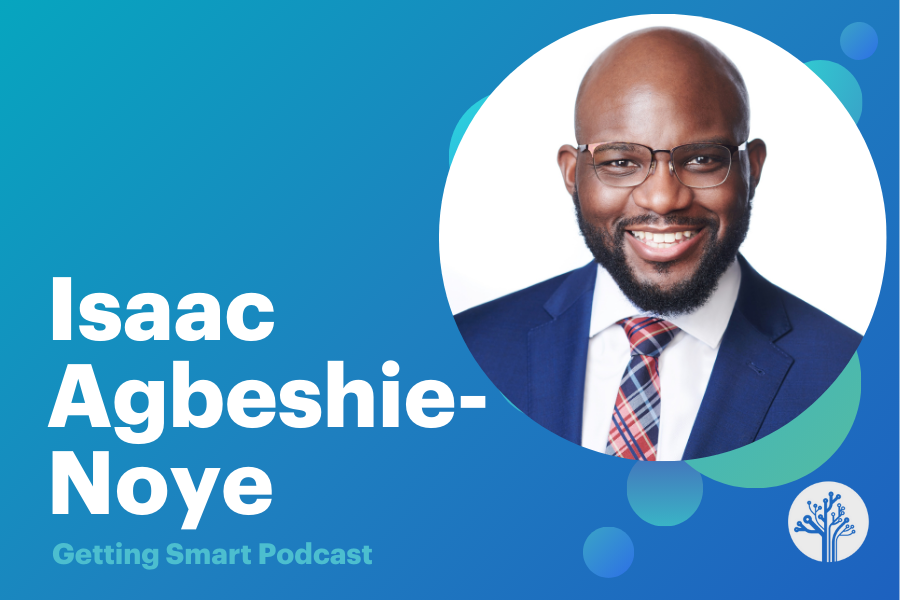
In this episode of the Getting Smart Podcast, Tom Vander Ark speaks with Dr. Isaac Agbeshie-Noye, Program Director for Widening Pathways at the SHRM Foundation. They discuss the concept of a skills-first future and how it can unlock potential and economic mobility through inclusive hiring practices. The conversation highlights the importance of aligning skills with workforce needs, the role of AI in shaping employment, and the value of collaboration between employers, schools, and training providers. Tune in to learn about the strategies and tools driving a more equitable and skills-focused workforce.
Outline
- (00:00) Introduction to Skills First Future
- (05:36) Understanding the Skills First Approach
- (09:59) Barriers to Skills-Based Hiring
- (14:38) Digital Infrastructure and Ecosystem Solutions
- (19:27) Impact of AI on the Future of Work
- (27:46) Next Steps and Future Initiatives
Introduction to Skills First Future
Tom Vander Ark: What is the skills-first future? Why will skills-first approaches widen access to high-wage employment and economic mobility? What does a skills-first mindset mean for education? You’re listening to the Getting Smart podcast. I’m Tom Vander Ark, and today I’m joined by Dr. Isaac Agbeshie-Noye. He’s the program director for Widening Pathways to Work for the SHRM Foundation. SHRM is the 60-year-old foundation associated with the world’s largest HR association. And Isaac is a real champion of skills-first approaches. Isaac, welcome.
Isaac Agbeshie-Noye: Thank you. Thanks very much for having me. I’m excited to be here.
Tom Vander Ark: Tell us a little more about the SHRM Foundation and this program, Widening Pathways to Work. Any more on the backstory and why the SHRM Foundation was formed? And how new is this Widening Pathways program?
Isaac Agbeshie-Noye: Sure. Happy to jump in there. So the SHRM Foundation is the 501(c)(3), the nonprofit arm of what you mentioned before, which is the Society for Human Resource Management. That network has about 340,000 HR professionals around the globe who are leveraging that network to advance their understanding of effective HR practices and how to create a workplace that works for everyone.
The SHRM Foundation, on the foundation side, believes that we can leverage all of those HR professionals and the organizations they’re connected to, to actually advance social good. So, let’s think about the areas where we need employers to be levers of change and how we can leverage all of the things they’re doing to advance their business outcomes to also provide guidance about the types of things we should explore to make the workplace more accessible for everybody.
The Widening Pathways portfolio, under that, is really focused on two sides, which I’m sure we’ll get into a bit in our conversation today. The first side is focused on the skills-first initiative. I’ll explain what that is and where we’re hoping to go with it. The second side focuses on untapped pools of talent. In the U.S. alone, we have about 7.3 million open jobs, and that is a number we are very unsatisfied with—not because we have a shortage of people who could be doing those jobs, but because we have a shortage in terms of alignment. It’s about getting people on the most express route from the skills they possess to an opportunity to contribute in the world of work using those skills.
The Widening Pathways portfolio is designed to try and close that gap by taking the things we’re learning from employers and scaling them so more people can adopt some of those practices.
Tom Vander Ark: I think your work will benefit all learners and workers, but you focus specifically on a group of populations. How would you describe the focus of your work or your target populations?
Isaac Agbeshie-Noye: Yes, we deeply believe that if we can create a workplace that can see and understand everybody, then we all benefit. We have work in our Untapped Pools portfolio right now that focuses on persons with disabilities, opportunity youth (youth aged 16 to 24 who are neither in work nor employed at the moment), the military community (including military spouses), workers over the age of 50, and persons with prior criminal records. These are our five areas where we’re exploring opportunities to reimagine what the workplace looks like. The purpose is to identify shared narratives across these experiences that position employers to support anyone. We want to figure out what those shared narratives are and how we can best provide guidance or opportunities to try new things to ensure everyone gets what they need to fully contribute to the workplace and help advance business goals.
Understanding the Skills First Approach
Tom Vander Ark: For those populations, I want to talk about the skills-first approach. It’s a mindset, a paradigm. It’s not just skills-based hiring; it’s really identifying priority skills, creating development opportunities around those skills, and then better signaling systems.
Isaac Agbeshie-Noye: We really view it as a strategy that goes from recruitment all the way to retirement. The major part of a skills-first future for us is unlocking potential and performance. We’re trying to figure out all the signifiers for potential and performance.
One of the myths we often encounter is that we’re not talking about replacing college degrees at all. Instead, we’re trying to figure out what a certain degree signifies someone can do and how we can get employers clearer about that. How can we get education providers clearer about that so we can make some of those matches easier? We’re recognizing all the ways people build valuable skills—whether through a four-year college education, a short-term credential, on-the-job training, or an apprenticeship. Whatever that looks like, you’re carrying a toolbox of skills with you. How do we create mechanisms for those skills to be seen, validated, and leveraged in decision-making?
Tom Vander Ark: Isaac, there are school systems all over America and a few institutions of higher education developing a portrait of a graduate or a learner profile. They’re trying to create an outcome framework that identifies priority skills. Does the SHRM Foundation have a skills taxonomy, or do you have a way to publicize priority skills?
Isaac Agbeshie-Noye: Yes, we have a few ways we do this. Most recently, we’ve been working with America Succeeds, and they have a durable skills framework that we lean into when discussing durable skills. However, we also know this is an area where many organizations are working on frameworks and approaches to validate skills directly with talent and eventual job seekers or current learners.
Our area, when it comes to SHRM, focuses on employers and employer adoption. How are we taking those taxonomies we’ve built to understand what humans can bring to work and operationalizing them in the systems we use to evaluate humans? How does that translate to applicant tracking systems, HR information systems, or the recruitment lifecycle?
We’ve been leveraging some of the great work others have done around identifying skills and going to employers to say, “How do you translate these job descriptions to speak more to these skills?” Then, we ask them about their experiences trying to find good matches for their organization, where those practices have worked, what makes them work, and how we can scale them so others are more excited about adopting them. We don’t see ourselves as the end-all-be-all to determine what skills employers should look for. Instead, we’re helping people understand how to translate the work to be done into one of these skills taxonomies and how to better communicate about it to attract the talent pools they need.
Barriers to Skills-Based Hiring
Tom Vander Ark: Isaac, the skills-first approach, particularly skills-based hiring, seemed super promising to us, and we thought that skill credentialing would be an important part of supporting more skills-based hiring. Better signaling around the demonstrated skills that a learner and worker have would be really important. I thought post-pandemic, the system had flipped to skills-based hiring. But I’ve sensed in the last year a little bit of a drawback from that. Why hasn’t skills-based hiring become the norm? What are the barriers to scaling skills-first practices?
Isaac Agbeshie-Noye: Yeah, I love this question because there are no shortages of barriers, but I’ll try to name a couple that are happening at the same time. Employers, generally speaking, are highly engaged and highly interested in adopting a skills-first mindset. What we are trying to figure out—and what prompted us to create this Center for Skills-First Future—is that we also know we have to try and create, as best we can, an “easy button” for people to start adopting new things. Change is hard. It becomes very difficult, and you get fatigued by having so much of it.
For anyone operating in the HR space over the last five years, you’ve probably gone through the greatest amount of change fatigue. There’s been so much change in just trying to figure out how to approach talent needs in this age of COVID. What usually happens—and this is a very human thing we do—is that we go back to the things we know. If we know that some of those things, some of those validators, have been easy for us to make decisions quicker in the past, we lean back on those things.
I think that’s what you’re seeing when you’ve identified that it seems like we’ve taken a couple of steps back in terms of the passion that was there at the beginning. It doesn’t look particularly the same. What will be great—and what we are continuing to do with our center—is to elevate these employer examples. We try to pull in what different types and sizes of organizations do because it’s very hard for a small business to look at practices that have worked at a large enterprise organization and figure out how they can apply that with fewer resources and supports.
We really try to figure out how we can drill this down to make it most digestible for folks in the context they are currently in. Then, we give them a shot to try something out and see if it works based on how their organization is operating. Some of it is a change management thing. Some of it is based on the pressures around us. We’ve seen, at least in some statistics, that unemployment is starting to rise. As a result of unemployment rising, employers have less incentive to try new things because they are not as starved for talent—there’s a lot more talent looking for work.
We’ve been trying to figure out how to keep and maintain the momentum, knowing that we still have—and I’m sure we’ll get to thinking about AI and some of the things that are changing the workforce pretty quickly soon—quite a few talent needs that we need to solution for. This skills-first mindset, in terms of thinking about how to attract these pools, will just be essential for us to think about the future. Change is still happening very quickly, and as a result, we risk leaving a lot of people behind or out of the job market, which ultimately isn’t useful for people to live a life that allows them to sustain themselves and their families.
Shorts Content
Digital Infrastructure and Ecosystem Solutions
Tom Vander Ark: Isaac, let me get wonky for just a second here. I want to talk about infrastructure. I guess we hypothesize that digital wallets—credential wallets—are going to be a critical part of the infrastructure to support skills-first talent transactions. But we can’t figure out where that leadership is going to come from for those learning and employment records. Is that going to be state leadership? We’ve seen a few states and a few regions starting to lead on digital wallets. Are digital wallets going to be an important part of how we capture and communicate our skill credentials and verified experiences? If that is an important part of the infrastructure, where’s the leadership going to come from to create access to those for everybody?
Isaac Agbeshie-Noye: Yeah, so there are a few things that are going to have to happen at the same time. It’s going to take a coalition of folks coming together to talk about how they relate to the adoption of any new technology. Employers obviously have a role because they need to be able to see those wallets, understand what information is being conveyed to them, and relate that directly to the openings they have available. But they must not limit themselves to just leveraging that wallet as an indicator of who’s qualified and who’s not because there are many other indicators we will need to consider.
We’re going to have to socialize an entire population of working humans to understand what this means, how it is advantageous to them, and to what degree they own the information in it. We’ll need to do some socialization around that part. We will also have to activate some policy levers. Clearly, there’s a role for government to play. I think we’re trying to figure out what role exactly government is trying to play right now. We’re leaning in on workforce development but stepping back on other ways of government intervention. This is a really interesting and kind of confusing time.
The other side of that, which is great, is that it’s fertile ground for opportunity for us to figure out what we want this to be. All of those players have a key role in this. I haven’t even mentioned the training providers yet.
Impact of AI on the Future of Work
Tom Vander Ark: I appreciate that answer. It is going to be a series of ecosystem solutions, and these ecosystems will be geographically based. Sometimes they’ll emerge in a vertical, sometimes both. Local leadership matters in these systems, and we agree on that ecosystem approach.
This AI thing is a really big deal. It seems to be changing the nature of work for many workers. It looks like it will change employment patterns, although it’s not clear how and when that will happen by sector. It looks like it’s starting to change skill priorities. What can you tell us about how AI is changing this skills-first future?
Isaac Agbeshie-Noye: I think the way you’ve described it is perfect in that there’s a lot of uncertainty coming, and no one knows exactly what it is going to be. I do think that what is happening right now is that some employers are starting to identify that with the use of AI, you may not need as many people to do certain tasks. But it also creates other opportunities in areas where you cannot replicate the automation or the type of power that leveraging AI can give you. It doesn’t optimize every job.
We’re going to see wide shifts in what types of work people do, which is natural and has happened over time. I heard something the other day at a conference that gave me hope. When Excel was created, people said, “We’re done with accountants. We’re not going to need any more accountants.” What we’ve actually found is a surge in the need for accountants, even though we’ve had this tool that was supposed to make it more accessible for us. The same has happened in radiology, where we thought once AI could look and see things even the human eye might not capture, we wouldn’t need any more radiologists. Now we have a shortage of folks in radiology and other areas in healthcare.
What I do think is going to happen is that we’ll see an outgrowth in certain industries and a contraction in others. The reason why this skills-first mindset is particularly important is because people need to know how those things are transferable—what you are bringing can actually be applied to something else. I went to college in pursuit of becoming a computer engineer. Midway through, I learned that wasn’t the love story I should be pursuing, but I realized that sociology and education resonated more with the skills I had to offer. I had to pivot some of my systems mindset to apply it to that sociology and education context.
I think it’s going to be a lot of that. That’s where skills and AI work together. Digital literacy is a key skill that we are all going to need regardless of generation. We are all going to have to learn how to navigate and figure out how to upskill ourselves or rely on our employer or education partners to upskill us. But it is in hopes of creating an ecosystem where you can actually see what types of skills people are bringing to the table to meet the needs that are going to be augmented by AI.
I don’t see this as a situation where we’re going to have a population of folks who will have no relevance to the job market. I think we’re just going to see jobs created in different places that we perhaps have not considered before, and we’re going to have to prepare people and our systems to pivot to receive those shifts and changes over time.
Next Steps and Future Initiatives
Tom Vander Ark: Well, I appreciate that answer. It does suggest that both employers and learners and workers need to become more metacognitive about the nature of work and the skills required today. I think your initiative is timely because we all need to be thinking about how the nature of work is changing and how that should change our talent transactions. I’m curious if you have any thoughts about what high schools and colleges should be doing to become more skills-first.
Isaac Agbeshie-Noye: I think part of it is being in communication and in community with employers to understand what types of skills are being valued and validated in the workplace. At the same time, we want education providers—on the K-12 and higher education sides—to think through what types of skills people need to live in the society we currently have. To what degree do we create opportunities or experiences, whether they be learning experiences or on-the-job experiential ones, to help people grow in those areas?
It’s going to be critical for our educator friends to think about how that permeates the curriculum in K-12 and higher education. You need to be able to see a through line between how someone has been challenged to develop their skills around communication, collaboration, or critical thinking. You need to see how they’ve done that in K-12, fine-tuned it through the attainment of a credential or a four-year degree, and how that positions them to do something in the workplace.
We need to create more visible through lines so learners understand why they need to develop certain skills and where they need to go to gain those skills over time. There’s a key role here for education. We cannot rely simply on people to get that type of training on the job because we’re finding that employers are dissatisfied with the skills people bring to the workplace. That’s not the moment to have conversations about skills development. We need to be doing it before, and it needs to be part of the conversation learners are having when they think about learning in general.
The earlier we can get people having conversations about what they’re good at, what they enjoy, how they understand what they’ve learned, and how they think it might be relevant to something in the future—perhaps tied to the world of work but also maybe not—the better. We’re in a space now where it’s not as relevant to ask folks, “What do you want to be when you grow up?” because you’re probably going to be nine different things. Instead, we need to ask, “What are the skills under that that you really want to develop to do that thing?” That’s where the conversation needs to go, and that’s where K-12 and higher education are supremely positioned to have those conversations with educators and students now.
Next Steps and Future Initiatives
Tom Vander Ark: That’s a great answer, Isaac. You know, we have a lot of people ask us, “Does every school system really need to create their own portrait of a graduate or learner profile?” And our answer is, the process is the product. It’s engaging in the conversation with your community. It’s co-creating that skills-first ecosystem that’s the important product. Yeah, you may get an outcome framework that identifies some priorities, but the important outcome is the ecosystem of relationships that you build in the process.
Isaac Agbeshie-Noye: Yeah, and part of that is also leveraging work that’s already been done to try and identify what some of these things are. This is the role that I think philanthropy can play—creating a setting where we can just try it out and figure out whether or not this approach works for everyone in the ecosystem. Once we understand how this works for employers, how training providers are leaning into it, and what it looks like on the learner side, we can create alignment. Then, we have a model we can try to scale.
We can also control for all the different contexts we know will come into play—differences in locality, state, geography, and demographics. We can think through all of those things if we have a model that works. I love what you just said about thinking through the needs we can see right in front of us locally. Let’s not think about boiling the ocean and what this would look like on a national scale. Let’s figure out what it could look like in your community and just start there.
We don’t need to be solving for every problem at once. We get to a solution by focusing on specific things and figuring out how those learnings can help us grow. I think local approaches are really going to take the day here over time. Realistically, things are moving really fast, but we know change also happens slowly. We have to pace ourselves in terms of what learnings actually look like and when we have enough evidence to know something is working well enough to try and grow it and scale it.
Tom Vander Ark: We’re talking to Dr. Isaac Agbeshie-Noye. He’s the program director of Widening Pathways to Work at the SHRM Foundation. As we wrap up, Isaac, a couple of questions you could address: What’s next for your program, Widening Pathways? And also, looking back, do you have any words of gratitude or shout-outs for people who have really contributed to this work of advancing a skills-first future?
Isaac Agbeshie-Noye: In terms of next steps, one of the things we’ve created—and we’ve mentioned that we work primarily on the employer side, but we know that’s a key lever in thinking about how we conceptualize skills, recognize them, and validate them—is a series of tools to help employers figure out where they are. Without that, it’s hard for them to think through how they’re going to partner with K-12 or higher education on anything. We’re trying to get that as clear as possible.
If you visit skillsfirstfuture.org, you’ll see a suite of tools there. It includes a skills action planner, which is an organizational assessment so people can see where they are in terms of this skills-first approach. We have a library with over 500 tools so people can see practices that have been tested and figure out what to scale that would work. We also have a vendor database there, so if you’re ready as an employer to jump in, it can connect you with providers to help support your capacity.
I think sometimes school districts and higher education institutions forget that they are employers too. There’s a lot of conversation about skills-first approaches, but they’re not employing it in their HR practice. That’s always a place to consider before you test any of this on students—test it with the people who are working there because you have fertile ground and a captive audience.
The last thing I’ll mention is that we have this specialty credential. As people are trying to figure out how to lead and sustain skills-first strategies, we have a learning tool for them to leverage. All of that is packaged in our suite of options with the Center for Skills-First Future. I encourage folks to join in there.
What makes that particularly unique, which leads to your second question about thank-yous and acknowledgments, is that it’s powered by the SHRM Foundation, but we didn’t build it alone. We brought together a coalition of 14 organizations doing things in the talent space and in philanthropy. We wanted us all to have a conversation about this together—not in competition, not in isolation, but really trying to figure out what it is we do, how those lanes intersect with each other, and how we can work together to imagine what this future looks like and make it accessible for as many people as possible.
So, my special shout-outs, in addition to you for having me on this show, are to those partners for their continued engagement in getting us to launch something that will hopefully be helpful to other folks.
Tom Vander Ark: Isaac, we really appreciate your work. We appreciate the commitment of the SHRM Foundation to a skills-first future. I love that you’re doing this in a collaborative way, nurturing ecosystems of better hiring and development practices. Thanks for your commitment. Thanks for that long-term commitment from SHRM. And thanks to our producer, Mason Pashia, and the whole Getting Smart team for making this possible every week. Until next week, keep learning, keep leading, and keep innovating for a skills-first future.
Guest Bio
Isaac Agbeshie-Noye
Isaac Agbeshie-Noye joined the SHRM Foundation in May 2025 as Program Director for the Widening Pathways to Work portfolio, bringing nearly 20 years of expertise in higher education, workforce development, and philanthropy. In his previous role at the Howard Hughes Medical Institute, Isaac spearheaded the development of a foundational portfolio for external partnerships, which included oversight of initiatives to expand access to career pathways in the biomedical sciences. He has held key programmatic and change management roles at organizations such as the Education Design Lab, George Mason University, and American University, leading initiatives designed to enhance student success and facilitate seamless transitions into the workforce. His approach to advancing change centers on building sustainable partnerships, driving innovation, and aligning resources to achieve mission-critical outcomes. Isaac holds a doctorate in Higher Education Administration from George Washington University.
Links
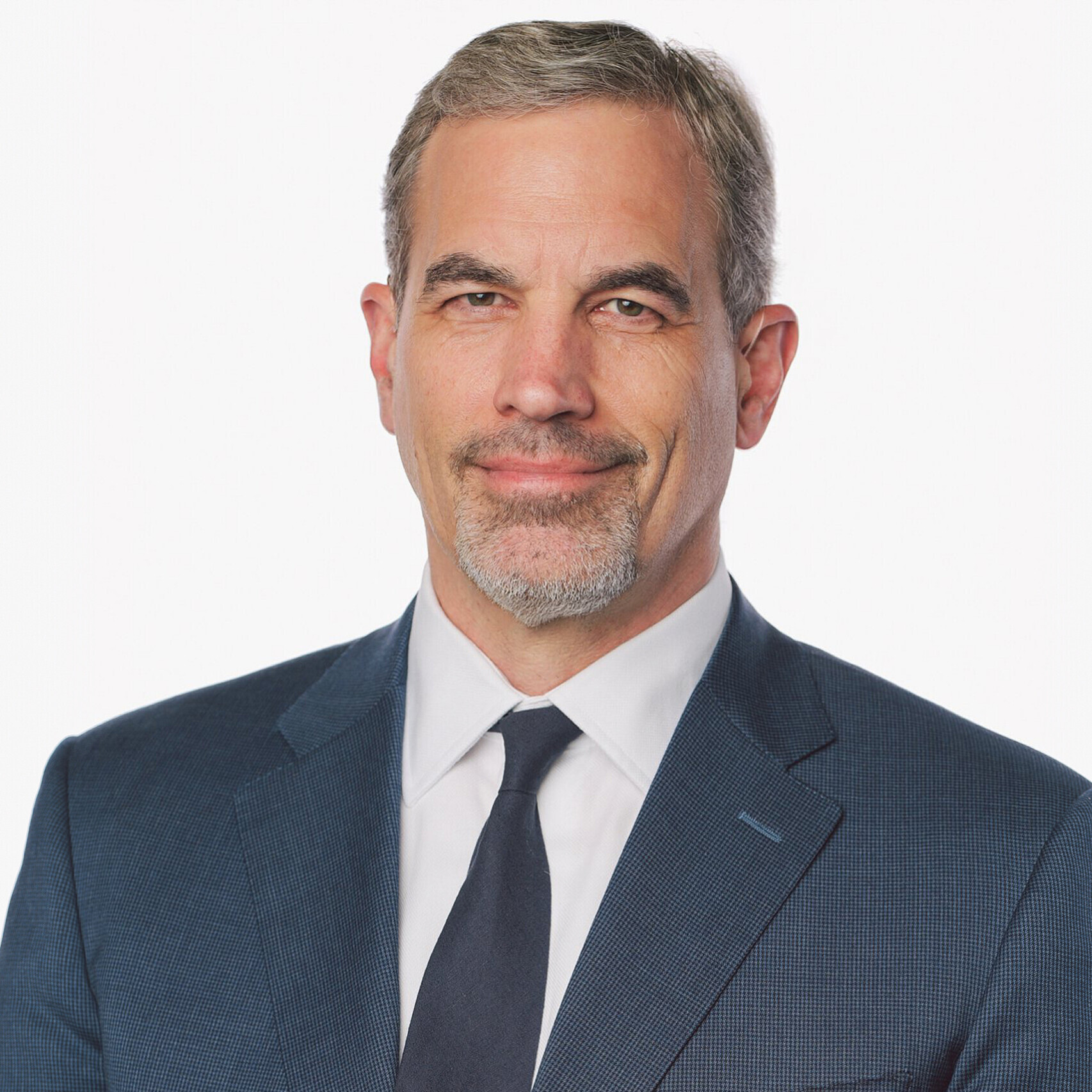


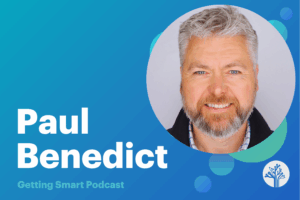
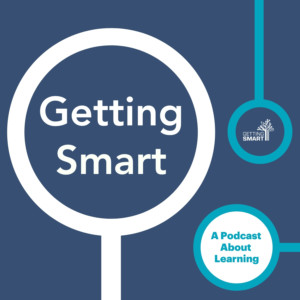

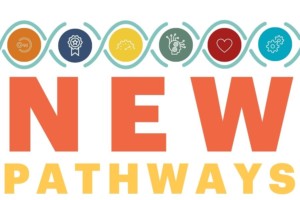

0 Comments
Leave a Comment
Your email address will not be published. All fields are required.